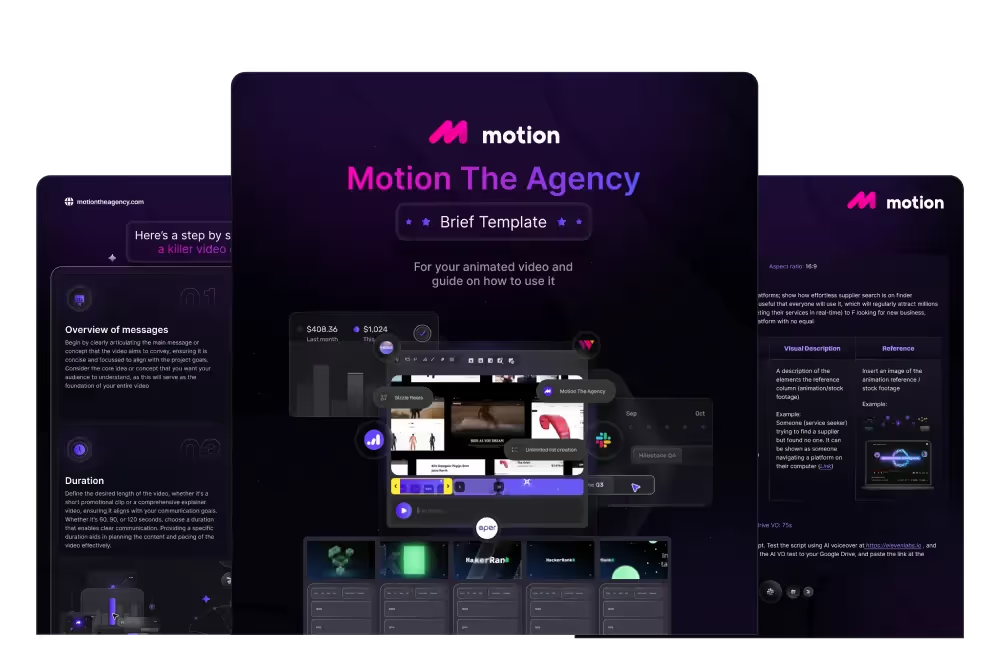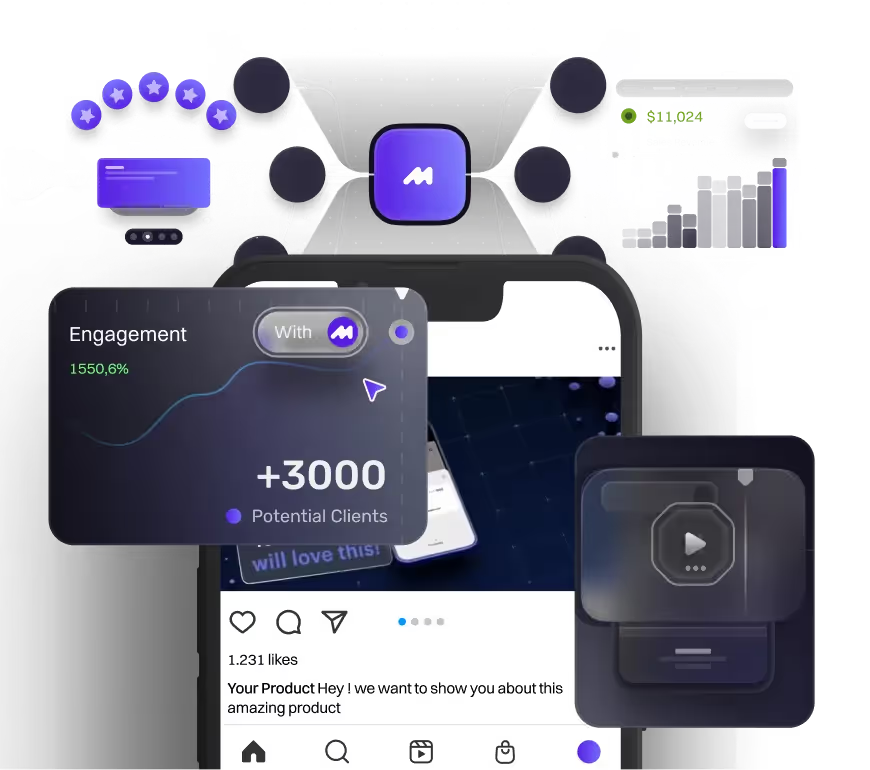Why Every Business Needs a Corporate Video & How to Create One
.avif)

What if we told you that 78% of people watch videos weekly and over half of them do so daily? Even more interesting, viewers retain 95% of a message when they watch it in a video, compared to just 10% when reading it in text.
It’s clear, video isn’t just content; it’s how people connect.
That’s why businesses are using video as a key communication tool, leading to the rise of corporate videos. These aren’t just any videos—they’re strategic, engaging, and built to capture attention in ways that static content simply can’t.
Unlike text-based materials, corporate videos combine visual storytelling, sound, and motion to simplify complex ideas and leave a lasting impact. Whether it’s a brand story that builds trust, a training video that enhances learning, or a product demo that brings features to life, video creates a dynamic, immersive experience that makes messages more memorable and effective.
Whether it’s for marketing, training, internal communication, or brand storytelling, video makes your message more impactful.
.png)
Corporate Video VS Commercial Video
Well, the two types of videos are closely related, and people often confuse one for the other. Commercial videos have a clear goal—sales and promotion. They are designed to be high-impact, attention-grabbing, and persuasive, making them perfect for advertising campaigns and product launches.
Corporate videos, on the other hand, focus on brand storytelling, the message a company wants to share. They serve multiple purposes, both internally and externally, from employee training and internal communications to investor pitches and brand positioning. Their goal isn’t necessarily to sell but to help businesses communicate effectively with their audience.
So What Considered As Corporate Video?
Well you can always consider corporate video as an umbrella term of multiple type of videos. Corporate videos aren’t one-size-fits-all—they’re tailored to fit specific business needs. the videos that could help you showcase company culture will be different from the video that you want to communicate you brand’s story. the right video helps you communicate your message in a way that sticks.
Here are some of the most common types of corporate videos:
- Brand Storytelling – More than just an introduction, this video tells your audience who you are, what you stand for, and why you exist. It builds an emotional connection and strengthens brand identity.
- Training & Onboarding – Keep employees engaged while ensuring consistency in training. A well-structured training video saves time, improves knowledge retention, and makes onboarding smoother.
- Product Demos – Show, don’t tell. A well-crafted product demo video brings features to life, making complex ideas easy to understand and engaging for both customers and internal teams. Whether it’s guiding new users, showcasing key benefits, or driving conversions, product demos help simplify information and enhance the user experience. Check out the video above to see our approach to product demo videos.
- Event Videos – Capture the energy and key moments from conferences, product launches, and corporate gatherings, transforming one-time events into evergreen content that extends your reach beyond the attendees. They showcase industry expertise, highlight key speaker insights, and keep audiences engaged long after the event ends. If you want to learn more about our experience in event videos, you can watch the video above.
- Company Culture Videos – Give potential hires a real feel for your company’s values and work environment. These videos help you attract top talent while reinforcing employee engagement.
Well this might rise a question what are the reali life use cases of corporate videos? well we need to remember that Corporate videos are more than just content—they’re a strategic tool that helps businesses communicate, educate, and engage effectively. Here are a few ways companies leverage video to achieve their goals:
- A tech startup using a brand video to attract investors.
- A SaaS company creating a product walkthrough for new users.
- A corporate training video improving onboarding efficiency.
How to Create a Corporate Video: Our Process
So, you’re wondering how to create a corporate video? Well, as a motion design agency, we’ve worked on plenty of corporate video projects, and here’s what we’ve learned, it’s all about strategic storytelling, seamless execution, and making an impact.
At Motion The Agency, we mix AI-powered tools with creative expertise to make the process faster, smoother, and more budget-friendly—without cutting corners. Here’s how we do it.
Pre-Production: Planning and Foundation
A great video starts with a solid plan. This phase is where we make sure everyone’s on the same page—goals, messaging, and audience—before jumping into production.
- Scripting & Storyboarding – Crafting a compelling story and mapping out visuals.
- Choosing the Right Format – Deciding between animation or live-action, depending on your budget, style, and message.
- Planning & Budgeting – Outlining production needs, setting a realistic budget, and ensuring we’re making cost-effective choices from the start.
Before we even start storyboarding, we use AI-generated images tools like Getimg.ai and Leonardo AI to visualize ideas and styles. This helps us align creative direction early, cutting down on unnecessary revisions and keeping everything on track from the start.
We also use AI-powered tools for brainstorming, scriptwriting, and visual planning, helping us speed up the creative process and make pre-production more efficient.
Production: Bringing Your Vision to Life
Now, this is where the real action happens, whether it’s live-action filming or animation, we make sure your video looks sharp, engaging, and on-brand.
- Live-action videos – If you choose to do live-action shooting, this stage involves on-location shoots with professional crews, talent, and equipment to capture the right look and feel for your brand.
- Animated videos – We start stitching and collecting assets during this stage, using motion graphics, character animation, and mixed media to craft a visually engaging and cohesive story.
.png)
- Our 2D animation process using Adobe After Effect
- 2D Animation – Quicker to produce and cost-effective, utilizing motion graphics, typography, and character animation to create engaging content. We primarily use Adobe After Effects for our 2D animation projects.
.png)
- 3D Animation – More time-intensive, involving modeling, texturing, lighting, and rendering, but it delivers a high-end, immersive visual experience. We use both Blender and Cinema 4D for our 3D animation projects.
This stage typically takes the longest in production. To maintain a smooth and efficient workflow, we utilize AI to automate repetitive tasks, allowing us to meet deadlines without compromising quality. This also frees up our designers to focus on the creative aspects of the process. We dive deeper into how we integrate AI into our workflow in our article, "Future of AI in Motion Design."
Post Production: Making it All Come Together
Once production is done, post-production is where everything comes together. This is where we refine, enhance, and fine-tune every detail to make sure your video looks polished and professional. The goal is to create something that’s not just visually impressive but also engaging and ready to make an impact.
- For live-action videos, this means selecting the best shots, color-correcting visuals, and ensuring smooth transitions for a seamless final product.
- For animated videos, it’s about stitching together assets, refining motion graphics, and perfecting the overall flow to create a polished, engaging piece.
To streamline this process and maintain efficiency, we integrate AI-powered tools to handle the finer details. Need subtitles? CapCut’s AI subtitle feature makes it quick and effortless. Looking for a voiceover? ElevenLabs provides high-quality AI-generated narration—perfect for clients on tight budgets or deadlines. By leveraging AI, we ensure precision, efficiency, and a faster turnaround without sacrificing quality.
How Much Does Corporate Video Production Cost?
The cost of corporate video production varies depending on style, complexity, and production needs. Here’s a quick breakdown:
- Budget-friendly ($500 – $1500)
- Simple talking-head videos, basic animations, or stock footage-based content.
- Best for internal communication, testimonials, or quick explainer videos.
- Mid-range ($1,500– $15,000)
- Covers multi-location shoots, custom motion graphics, and detailed 2D animations.
- This is the range Motion The Agency specializes in, offering high-quality animation at an efficient price.
- Provides a more engaging and polished final product without the excessive costs of high-end productions.
- High-end ($20,000+)
- Includes full-scale commercials, high-end 3D animation, and VFX-heavy productions.
- Requires advanced post-production, cinematic storytelling, and premium visuals.
For a deeper breakdown of video production costs, check out our blog: How Much Does Corporate Video Production Cost?
Now that we know the long process and the cost of a corporate video the next question people might ask is “Is it worth it to invest in corporate video?”
Well, in our opinion is, yes! in the condition your company really needs it and it can be re-use in other occasion.
Why Investing in a Corporate Video is Worth It
Video isn’t just content. It’s how people connect, grab attention, and stay engaged. With motion, visuals, and sound working together, video makes messages clearer and more memorable.
We get it, corporate video is an investment in both time and budget. Some companies hesitate when they realize what goes into production, but a well-executed video isn’t just another asset, it’s a powerful tool for brand awareness, engagement, and business growth. Whether it’s a brand story, training session, or product demo, video ensures your message reaches the right audience in the most effective way.
That’s why having a clear strategy matters. What’s the goal? Can the video be repurposed across different platforms? A well-planned video keeps working for your brand long after it’s published. Well if you still want to know more about corporate video you could check our "Top 15 Corporate Video Agencies" blog!
At Motion The Agency, we make the process smarter, faster, and cost-effective. With AI-powered tools and streamlined workflows, we create high-quality, engaging videos without extra costs or delays.
In today’s digital world, video isn’t a nice-to-have, it’s a must. Ready to create something impactful? Let’s talk and check out our Corporate Video Service Page!
table of content

creative brief




Contact Us
Ready to elevate your brand? Contact us for your
Free Custom Video Sample














